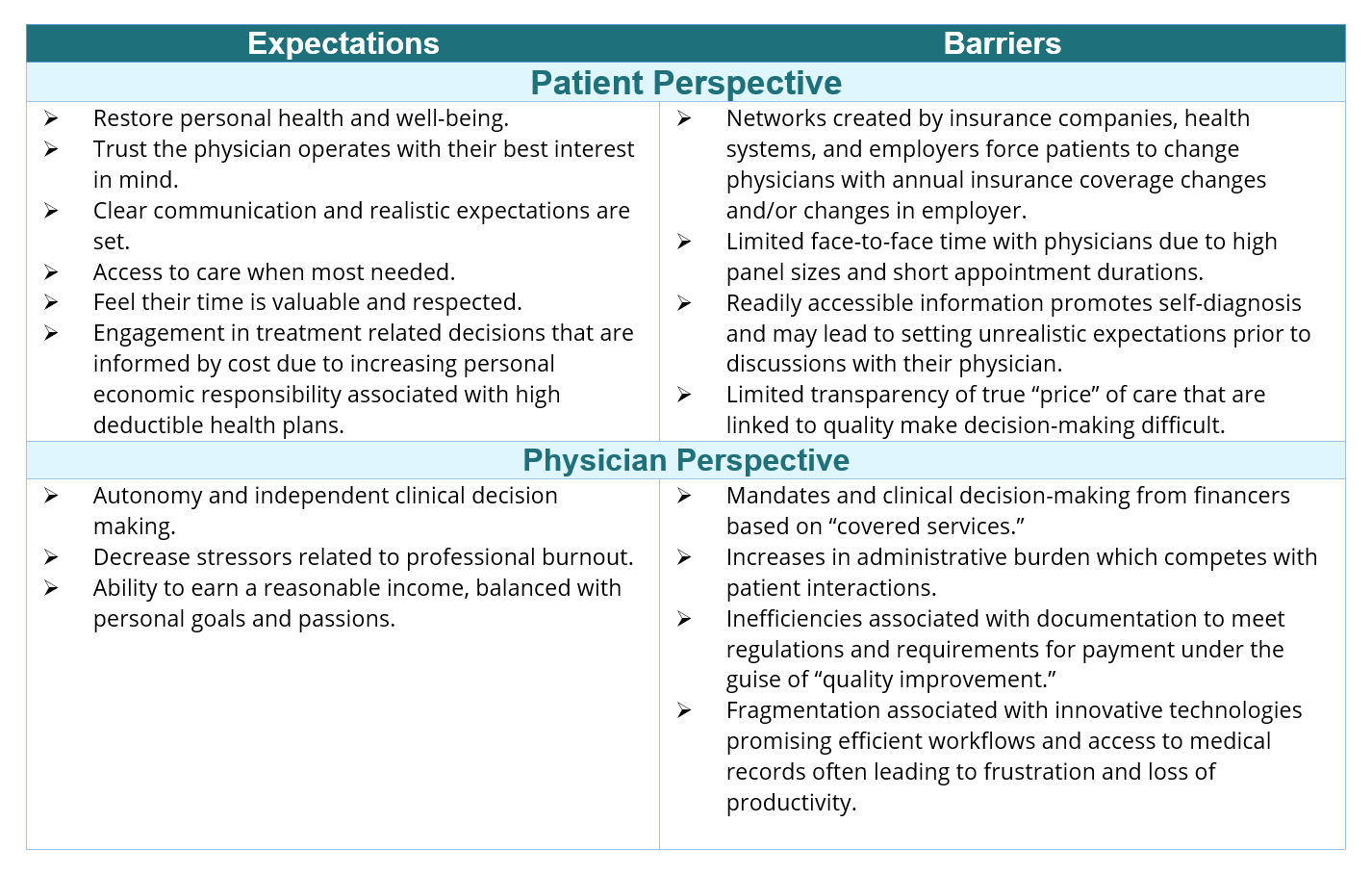On the Brink: Restoring the Patient-Physician Relationship
“I’VE LEARNED THAT PEOPLE WILL FORGET WHAT YOU SAID, PEOPLE WILL FORGET WHAT YOU DID, BUT PEOPLE WILL NEVER FORGET HOW YOU MADE THEM FEEL”
– Maya Angelou

Our relationship started as one of client and consultant 12 years ago and has flourished over the years, founded on principles of mutual respect, trust, transparency, and mentorship. As we embarked on a journey to create a healthcare advisory firm, our first order of business was to define the vision for our new company. As we contemplated our desired impact on the healthcare industry, we focused on the fundamental relationship that exists between the patient and physician and believe this relationship is in peril and on the brink of collapse.
Whether looking at patient or physician satisfaction surveys, the message is clear: patients and physicians are unhappy with the relationship they have today. A relationship requires engagement from both parties and fundamental barriers exist that limit the bond from forming between patient and physician. In our view the expectations patients and physicians have surrounding the relationship and the barriers that exist to satisfying these expectations are presented in the table below.

The race is on across the healthcare technology industry with new market entrants promising digital and telehealth, patient engagement, and data exchange solutions as a holy grail. While emerging technologies will no doubt revolutionize the practice of medicine through the 21st Century, there are no electronic systems that will replace the human aspects of supplying sound clinical care through a foundational relationship built on trust.

We absolutely agree with Dr. John Noseworthy’s perspective in his December 2019 New England Journal of Medicine[1] article where he describes the practice of medicine as a balance of humanitarian profession and competitive business. He goes on to highlight two fundamental principles that must exist to support the relationship:
- Enable physicians to spend adequate time with patients who need extra time.
- Identify and support the work of a coordinating physician for patients who are seeing multiple specialists.
In a series of blog posts over the next 60 days, we will speak to a call to action among the medical community and seek answers to how we bridge the gap between Dr. Noseworthy’s conundrum of humanitarian professionalism and competitive business practice while preserving the innate relationship between patient and provider. Specifically, we will focus on answering the following questions:
- What are the skills both patients and physicians must employ when interacting with each other to enhance the relationship?
- How can physical space, technology and other tools be used across the clinical care setting to maximize the interactions between the patient, the physician, and the care team?
- What macro-level changes must be contemplated and addressed to ensure the patient-physician relationship is preserved?
 Please be sure to follow us on LinkedIn® and stay tuned for our next posting as we dive into the interpersonal connection between patient and provider. Feel free to post your comments and thoughts.
Please be sure to follow us on LinkedIn® and stay tuned for our next posting as we dive into the interpersonal connection between patient and provider. Feel free to post your comments and thoughts.
[1] Noseworthy MD, John. “The Future of Care – Preserving the Patient-Physician Relationship” NEJM. December 5, 2019. https://www.nejm.org/doi/full/10.1056/NEJMsr1912662 , accesses August 4, 2020.

August 17, 2020 @ 12:33 pm
Very well done